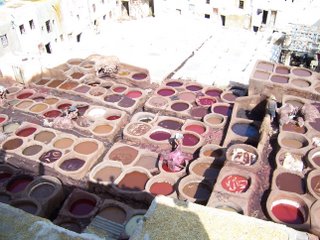Our Intervention in Libya is Misguided
I am publishing this in a blog for two reasons: to document the date on which I am willing to say that I believe our quick intervention in Libya is misguided, and to show that I am willing to state this publicly.
While I am no expert in North African politics, and can propose no simple solution or alternative to our intervention (enforcement of a no-fly zone) in Libya, I have read enough history and news to propose that a different approach would have been more appropriate than our current course of action.
Mainly, I intend to forward the idea that we were misguided in pursuing military action in Libya with such quick speed. I believe that, in the future, we will be motivated to look back on this moment and reconsider our speedy course of action.
We feel justified in our mission because an intervention in Libya is different than our invasion of Iraq.
While this statement is certainly true, one can easily recognize that many factors that have led to the present-day situation in Iraq are present in Libya. These include:
1) We do not have a clear, feasible plan for a post-Qaddafi Libya, as we clearly didn’t have a well thought-out plan for the future of Iraq after the fall of Saddam Hussein.
2) We do not understand the realities of Libya. America and her western allies have shown that we have only a limited comprehension a society divided along religious or clan lines (see our efforts to establish liberal democracy in Iraq and Afghanistan). Libya has many more partitions than we can begin to fully grasp, and history has proven that a lack of understanding of any foreign land leads to folly in war.
We feel justified in our mission because of broad international support.
President Obama recently suggested that our intervention is justified because it was solicited by the Arab League’s call for the UN to impose a no-fly zone on Libya and legalized by the UN Resolution 1973.
Both of these points represent important differences between our most recent military intervention and previous actions. However:
1) The Arab League has always had a strained relationship with Qaddafi, to say the least, and I believe they would not call for the same actions against other authoritarian, equally repressive regimes in countries which are more influential in their alliance. We cannot trust the moral authority of bodies that would call for the destruction of one regime while support others that are similarly indefensible.
2) Other nations that were involved in the vote on the UN Resolution 1973 have interests besides those of the Libyan people. Our tendency is to trust that decisions made by a large number of countries have moral authority and the best interests of humanity at their core. However, other nations’ decision-making processes are affected by economic and geopolitical interests just as much as those of the United States. Decisions made by international bodies should not be accepted without thorough consideration of those interests.
Our rapid entrance into this conflict was necessitated by the imminent loss of human life.
Quick intervention was needed to prevent the slaughter of countless Libyan civilians. It is clear that Qaddafi was focused on suppressing a widespread rebellion by whatever means necessary. However:
1) No one can quantify the amount of life that would have been lost had the UN not acted. Nor can we quantify the amount of human life that will be lost as a result of the war between Qaddafi and rebel forces, which will surely be augmented by the fact that the dictator has been left only with the option to fight until the ‘bitter end’. Qaddafi has shown that he is motivated by an aggrandized vision of himself, and has used the image of himself fighting anti-Libyan forces as a means to maintain popularity. Western intervention provides him the opportunity to further that image and force his more zealous supporters to fight with abandon.
2) The enforcement of a no-fly zone may be insufficient to enable the rebel forces take control of Libya. A protracted stalemate between the two sides would require further action by the UN or its members, and few are willing to do so.













